Spintronics Review
Running both a school library and an Innovation Precinct, supporting creative thinking, prototyping and product making, means I am always on the lookout for new educational resources to engage my students. When I was offered the chance to try Spintronics, I jumped at it. I am a massive fan of the Turing Tumbles, which are made by the same creators of the Spintronics.
There is lots to love about Spintronics, so let’s beak it down.
What is Spintronics?
Spintronics explores mechanical circuits through hands-on puzzle solving and building. It explores the concepts of energy, currents, electronics and voltage, all without batteries or power. It’s amazing.
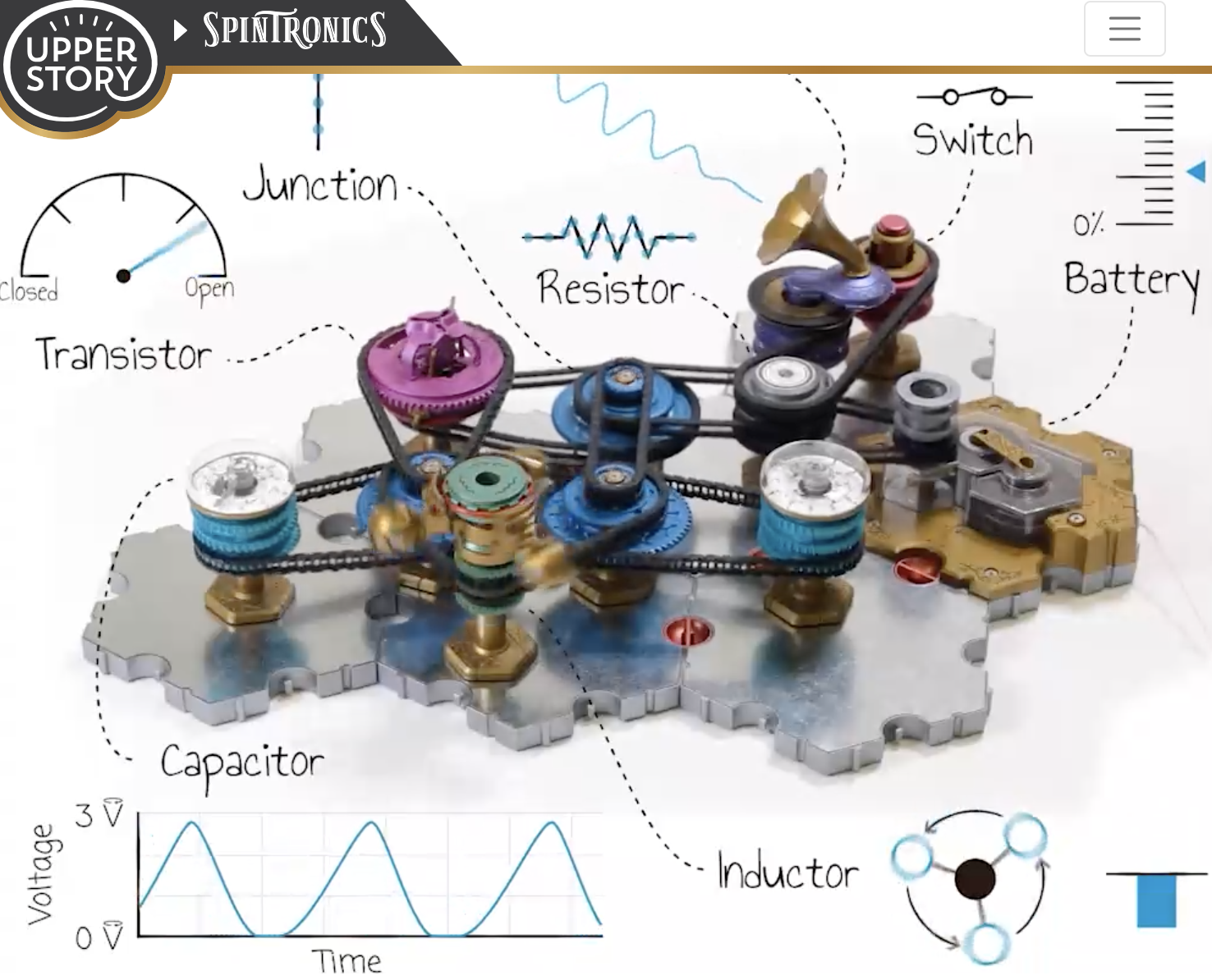
The kit steps you through building circuits, using the magnetic base plates, battery component and other components. The battery doesn’t require any actual batteries or power, instead it creates energy with a pulley mechanism. You can learn more about the science behind this system here.

Unboxing
Okay, unboxing might only be fun the first time around, but I can’t overlook the boxing and presentation of the Spintronics. Any educator or school library staff member knows that storage and putting all those bits and pieces back and making sure a kit stays together is super important, and the boxing of the Spintronics makes that easy. Each section is customised to fit each piece of the Spintronics kit, making it very clear to small (and big) people, how to pack it away. The box itself is durable and easily fits the comments back in, time after time, unlike some boxes (UNO cards, I’m looking at you).
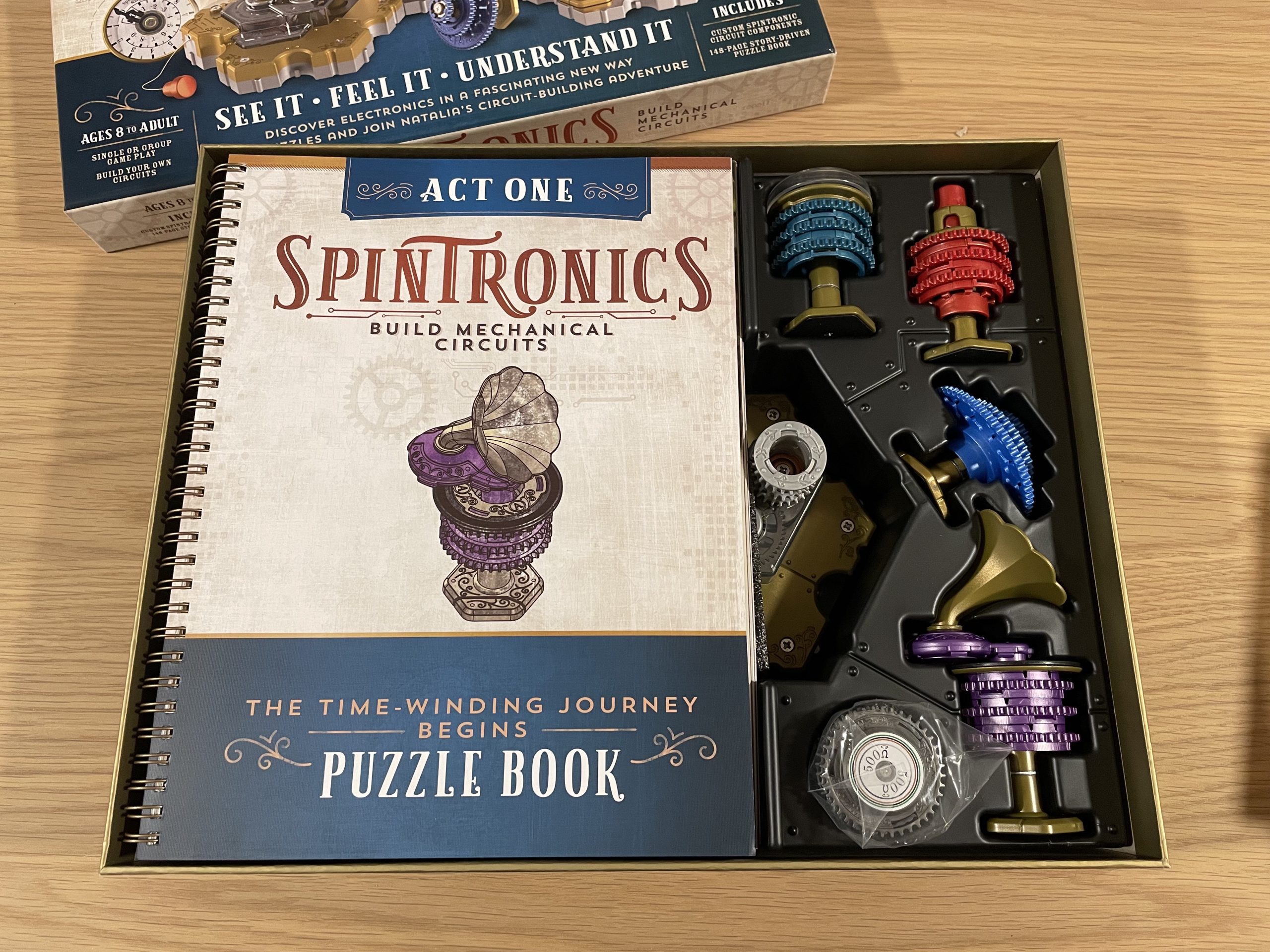
Components
In the Spintronics Act One kit you receive a number of components. They include the resisters, switch, ammeter, junction, battery (no batteries needed), bands, magnetic base plates, locking mechanisms and key and instruction storybook. The bands, instead of being rubber or one size only, are made from little clips, which I think are also used in similar educational products (Lego?) which clip and unclip to make chain as long as you need. I love this flexibility. I regularly find them all over the floor, but at least because they are similar to the Lego ones I can replace them when needed. Everything is of excellent quality and each of the components tough enough to withstand regular use. They are also pretty. The whole kit has a steampunk vibe and the components, box and story all fit nicely into that aesthetic. There is something very tactile about each component and you just want to pick them up and explore what each does.
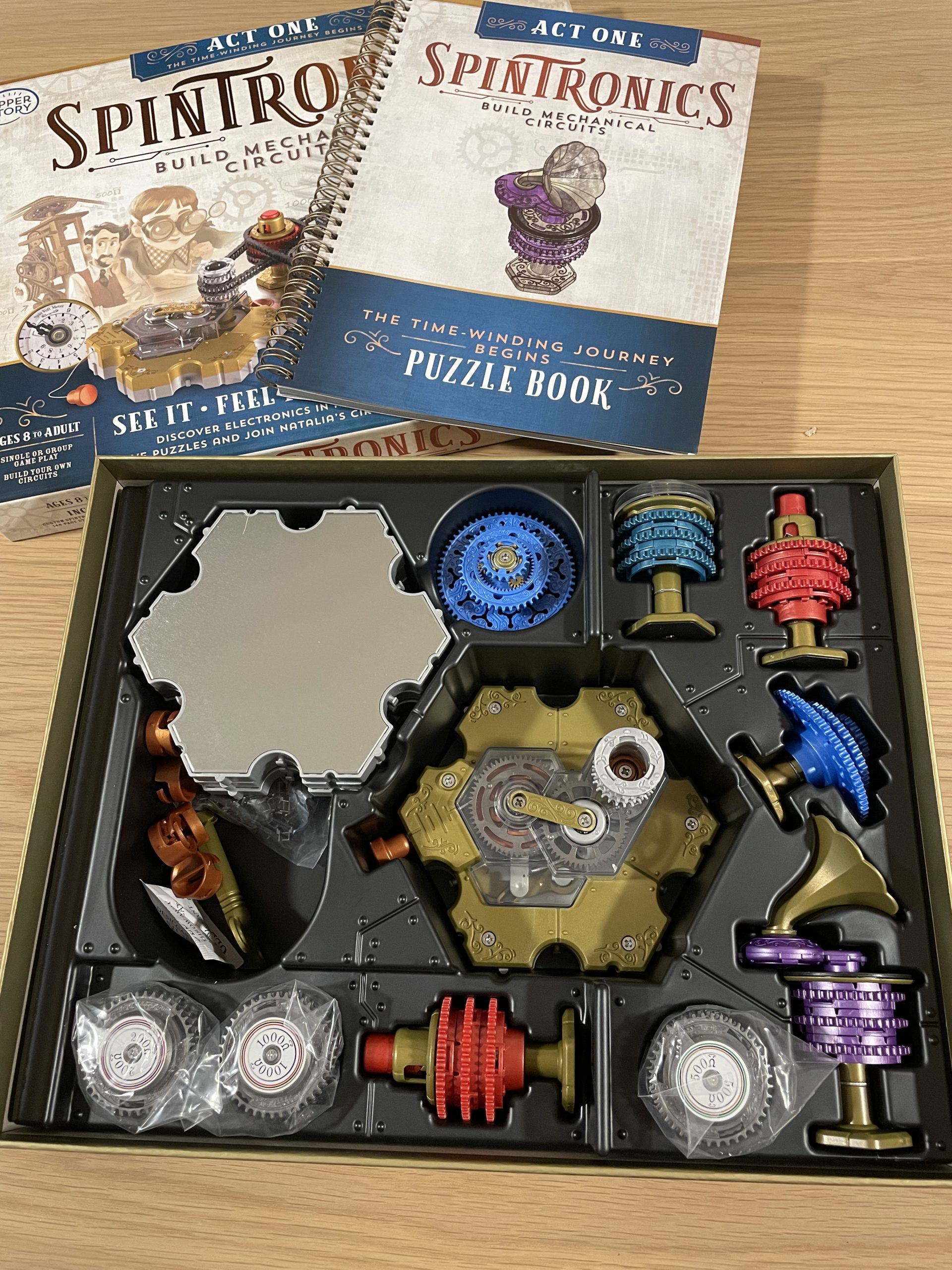
The story
I have to admit that the stories are my favourite part of both the Spintronics and the Turing Tumble. When trying it out myself, I got to challenge four before pushing the components away and curling up with the book to finish the story. The book is spiral bound, beautifully illustrated and weaves a story around the principles of mechanics being taught. School library staff and teachers rejoice, because here is your literacy and literature base for STEM already prepared and ready to go. It would also be very easy to weave in any other story about time, circuits or mechanics or have students create their own story about the circuits they build.
The challenges
The story steps the reader through a series of challenges, each building on the skills of the last. Through these challenges you learn the principles of circuits. Most of the challenges have answers in the back of the book and there are hints and solutions online. Of course, there is nothing stopping you from using the components in any way you please and once you’ve mastered the basics you can create complicated systems or set your own challenges. The box suggests these be used from ages 8 to adult and they really can. The basics are simple enough to master and yet any older student or adult is going to be mesmerised by what the kit can do. It’s fun, hands-on learning that is as open-ended as your imagination.

Simulator
I love that the kit is supported by an online simulator. This allows you to drag and drop in any of the components into an online workspace, test your design and experience and complete the challenges in exactly the same way that you would with the physical kit. This enables you to really extend the learning, testing your ideas more quickly that you can with the physical kit and engaging in the learning with bigger groups of students.

What can you use it for?
Lunchtime activity – we have a kit in the library so students can work through it at lunchtime. Having the Spintronics out always sparks interest as students and staff walk by. Resist pulling that ripcord, I dare you!
Whole class instruction for a unit on circuits, electronics and energy. I’ll be sharing this kit with the science departments and it would fit nicely in with their units. Thanks to the online simulator, you could easily run this with a whole class, even if you can’t afford to purchase multiple kits. Students could work through the challenges on the simulator https://upperstory.com/spintronics/simulator/, and then show their work on the physical model.
Extension activity. The kit and story and challenges enable students to work at their own pace so could easily be given to students as an extension activity.
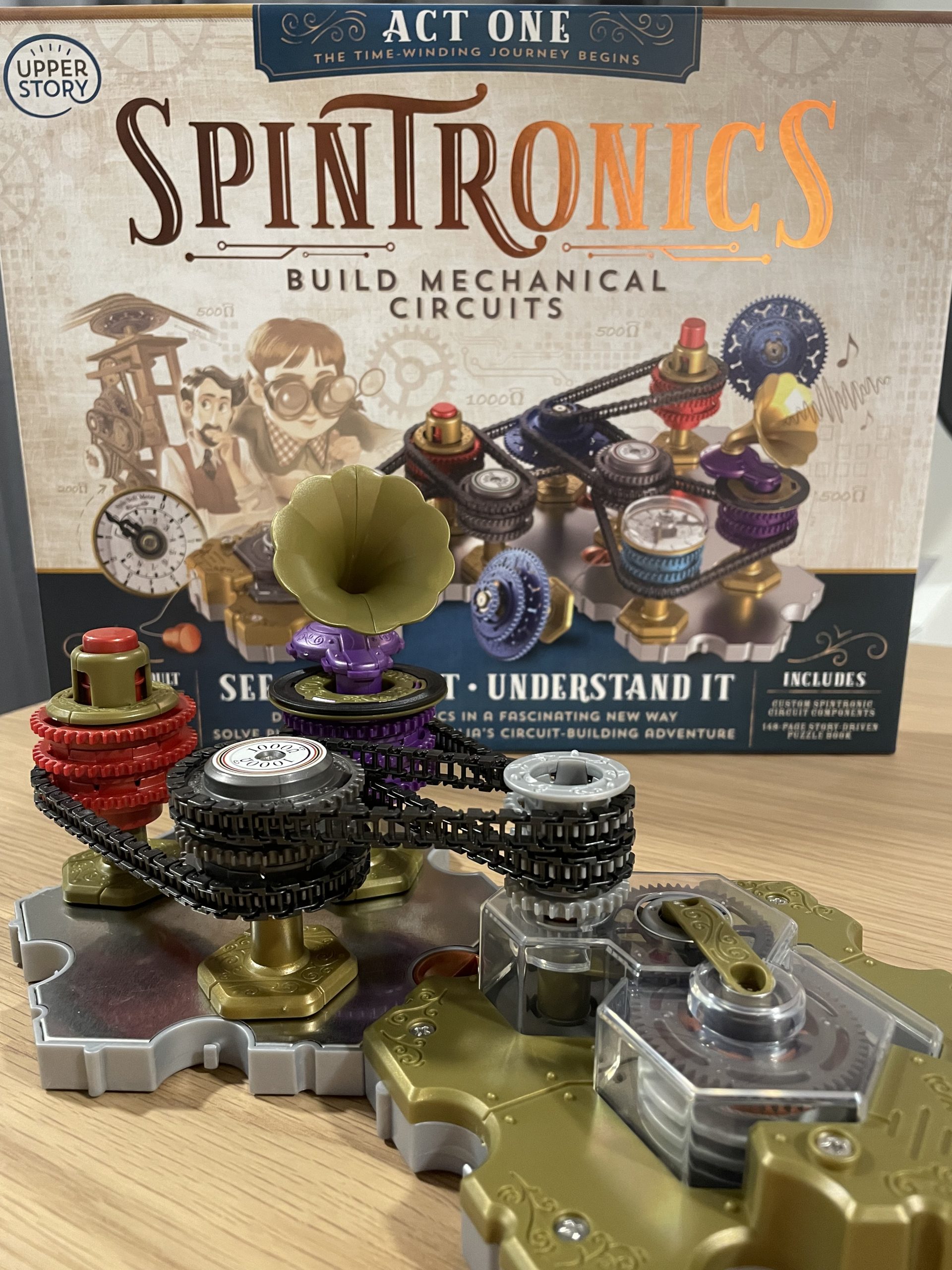
I highly recommend the Spintronics Kits. Great quality, amazing idea and excellent opportunities for curiosity and learning.
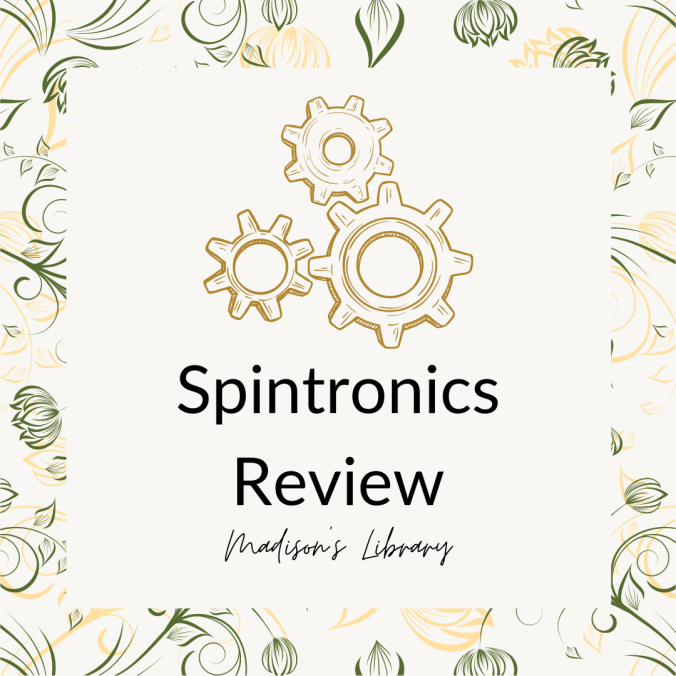


Leave a Reply